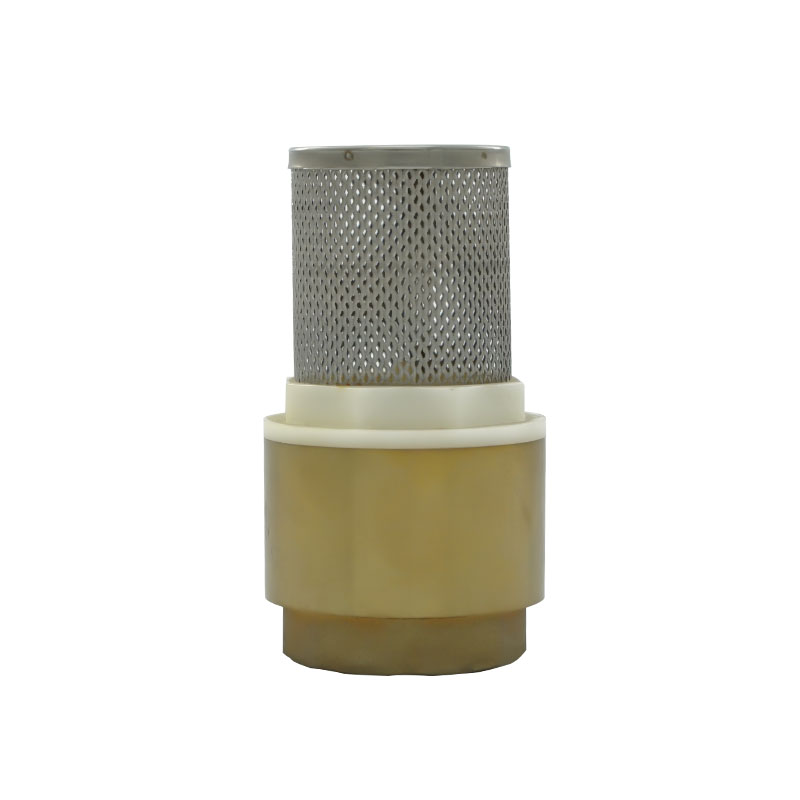Understanding Check Valves: The Essential Component for Preventing Backflow
2025-01-03
In various industries and systems, preventing the backward flow of fluids is crucial to maintaining efficiency, safety, and equipment longevity. This is where check valves play a significant role. Often overlooked but vitally important, check valves ensure that fluids move in only one direction, preventing potential damage and contamination. But what exactly is a check valve, and why is it so essential?
What Is a Check Valve?
A check valve is a type of valve that allows fluid (liquid or gas) to flow in one direction only, automatically preventing backflow. This one-way flow mechanism is essential in systems where reverse flow could cause damage to equipment, compromise processes, or introduce contamination. Check valves are used in a wide variety of applications, from household plumbing to industrial systems and even in medical devices.
Unlike other types of valves, check valves do not require manual operation. Instead, they work automatically, opening to allow fluid to pass through in the correct direction and closing when the flow reverses. This self-regulating feature makes them highly effective in many different environments.
How Do Check Valves Work?
Check valves are typically made up of a few simple components: the valve body, a disc or ball, a spring (in some models), and a seat. The key element is the valve’s mechanism that prevents backflow, which is achieved through the closure of the valve when fluid tries to reverse direction.
When fluid flows in the intended direction, the disc or ball is pushed open, allowing the fluid to pass through. If the flow reverses, the disc or ball is forced against the seat, closing the valve and blocking any backflow. This simple yet effective design helps protect the system from potential damage.
There are several variations of check valves, each suited to different applications:
- Swing Check Valve: A hinged disc swings open when the flow is in the correct direction and closes when the flow reverses.
- Ball Check Valve: A ball moves to block the reverse flow when it is pushed away from its seat by the backflow.
- Lift Check Valve: A disc or piston is lifted by the forward flow of the fluid and falls back into place when the flow stops or reverses.
- Spring-Loaded Check Valve: A spring assists in closing the valve when backflow occurs, providing a quicker response.
Why Are Check Valves Important?
1. Preventing Damage to Equipment
In many systems, backflow can cause significant damage to pumps, compressors, and other equipment. For example, in a water supply system, backflow can lead to contamination, damage to pipes, and loss of pressure. By using check valves, you can protect these critical components from being exposed to reverse flow, which could otherwise lead to costly repairs and downtime.
2. Maintaining System Efficiency
Check valves help maintain the efficiency of fluid systems by ensuring that fluids move in the correct direction. In systems where consistent flow is necessary, such as in HVAC systems or chemical processing plants, backflow can disrupt operations, leading to inefficiencies or even system failure. With check valves in place, the system can run smoothly without interruptions, leading to improved performance and energy savings.
3. Preventing Contamination
In industries like food and beverage processing, pharmaceuticals, and water treatment, contamination prevention is critical. Backflow can introduce contaminants into the system, leading to serious health and safety risks. Check valves prevent this by blocking the reverse flow of potentially contaminated fluids from entering clean or sterile systems. This is especially important in processes where even small amounts of contamination can lead to product spoilage or equipment malfunction.
4. Enhancing Safety
In many systems, such as gas pipelines, chemical plants, and sewage treatment facilities, backflow can pose serious safety hazards. A sudden reversal in the direction of flow can create dangerous pressure spikes or cause toxic substances to be released. Check valves help mitigate these risks by acting as a first line of defense, ensuring that the flow direction is maintained and preventing hazardous situations.
Applications of Check Valves
Check valves are used in a wide range of industries and applications, including:
- Water Supply Systems: To prevent backflow and maintain water pressure in municipal water systems, residential plumbing, and irrigation systems.
- Oil and Gas: To protect pipelines, pumps, and compressors from reverse flow and maintain efficient operations.
- HVAC Systems: To ensure the proper flow of air or coolant in heating and cooling systems.
- Pharmaceutical and Food Processing: To prevent contamination in clean water and food production lines.
- Wastewater Treatment: To ensure that waste does not flow back into the treatment system and damage infrastructure.
- Marine and Industrial Systems: To maintain the safe and efficient flow of fluids in machinery, tanks, and engines.
Choosing the Right Check Valve
When selecting a check valve for a specific application, several factors need to be considered, such as the type of fluid being used, the pressure and temperature conditions, and the required flow rate. Materials such as stainless steel, brass, or plastic may be used, depending on the fluid’s composition and the environment.
Additionally, the size and design of the check valve should be compatible with the system’s pipe diameter and flow requirements. It’s also important to ensure that the valve is easy to maintain and inspect, especially in larger systems where service and repairs can be challenging.
Conclusion
Check valves are simple yet essential components that play a critical role in maintaining the functionality, safety, and efficiency of fluid systems. From preventing backflow and equipment damage to ensuring the quality of the fluid being processed, these valves provide crucial protection across a wide range of industries. Understanding how check valves work and why they are important can help businesses and homeowners alike appreciate their value in maintaining smooth and safe operations. Whether you’re working with water, oil, gas, or chemicals, investing in the right check valve is key to safeguarding your systems and processes.



